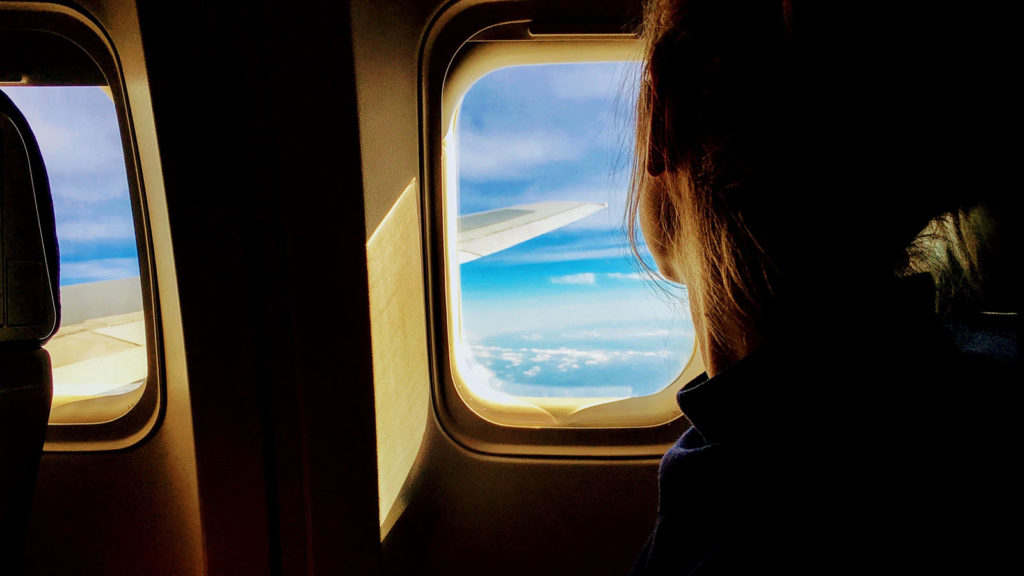Most airlines start selling flights almost a year before each plane hits the runway. But with airfare prices always changing, when is the best time to book a flight? Should you book earlier to secure your seat, or wait it out hoping for a sale? What about using points – and how about double Status Credits promotions?
Okay, we can’t go into every scenario. And we’d always remind you that airfare prices can change at any time. But there are some practical steps you can take to get the best value from every booking. Whether that means the cheapest price, the greatest rewards or something else is entirely in your hands.
Booking flights during Happy Hour, and other sales
It probably goes without saying, but if you’re buying a ticket, keep your eyes peeled for when flights go on sale. There’s more to this approach than sheer luck though, so listen up!
Virgin Australia, for instance, has regular Happy Hour sales. They’re predictable, running every Thursday between 4 pm and 11 pm AEST – so set a reminder in your calendar to book your flights. The sales each week can be different, spread across varying routes and travel dates. If you don’t find something suitable the first time, something else may pop up in a later week.
Over at Qantas, you can visit this page of the airline’s website to browse the best flight prices throughout the year. When sales are running, you’ll also get a clear idea of the dates available at a discount. And while you’re at it, use the Qantas app to set fare alerts to your favourite destinations.
Booking flights when an airline announces a new route
Here’s a strategy that’s better when spending points. Let’s say an airline lifts the lid on a new route – and you happen to have points that can be used to book those flights. As soon as you hear the announcement, that could be your golden opportunity to secure a seat using points. Let me explain.
Usually, flights go on sale almost a year before departure. To be precise, most often between 330 and 353 days in advance. This gives the airline 11-12 months to try and fill every seat, and to target would-be travellers with sales and offers. But when a new route will begin at shorter notice, the airline is starting from behind.
For instance, six months out from departure on a regular flight, a certain number of seats would have already been sold. But if a new route is just announced and starts in six months, the airline needs to play catchup and fill those seats.
To help, airlines can often make more seats available for booking using points than you’d otherwise find. When LATAM recently announced the return of Melbourne-Santiago flights, Economy reward seats were available on most travel dates. In fact, so too were Business Class reward seats. A much rarer find across the Pacific.
Qantas also regularly runs Points Planes when there’s a new flight. This is where every single seat on the aircraft can be booked using Qantas Points, making it a great time to secure a spot in Business. It’s a strategy I used to easily nab Business Class to India on Qantas’ inaugural Sydney-Bengaluru flight last year.
Also read: Incredible India in style using Qantas Points
Keep your eyes peeled for double Status Credits promotions
From time to time, programs like Qantas Frequent Flyer and Velocity Frequent Flyer run ‘double Status Credits’ promotions. Of course, Status Credits are what help a traveller to reach or retain Silver, Gold and Platinum status. For those on that path, these offers can be particularly useful when booking flights.
By earning double Status Credits, every flight taken counts as two. In other words, you could reach or retain your desired frequent flyer tier with just half as much flying. You could even be strategic about it. For instance, if the price difference is minimal, consider the merits of buying flexible Economy rather than standard Economy.
Let’s take a typical Qantas flight from Sydney to Melbourne as an example. A discount Economy fare usually earns 10 Status Credits, while flexible Economy delivers 20 Status Credits. With double Status Credits on the table, those figures become 20 and 40, respectively.
In other words, for the same seat on the same flight, you could potentially earn four times as many Status Credits overall. Book discount Economy on a regular day, and that’s 10 Status Credits. Book flexible Economy during a double Status Credits promotion, and that’s 40 Status Credits (20 x 2).
Of course, not everybody needs Status Credits – or status, for that matter. The benefits of status only come into play when you’re actually travelling, after all. But if the difference means reaching Gold rather than retaining Silver, perks like year-round lounge access and extra checked baggage could pay for themselves rather quickly.
Book flights earlier using dollars, and later using points
Particularly on routes popular with business travellers, buying last-minute airfares can be pricey. For instance, I regularly fly from Brisbane to Sydney and Melbourne, and can often get fares in the low-to-mid $100s when booking far ahead. But sometimes, I need to fly last minute for work. That’s when the same flights can jump to $300-$500 one-way.
Airlines can get away with it too. After all, when you’re planning travel at short notice, you need to fly. And chances are, the flights you’ll want are popular with others in the same boat.
But when you book further ahead, it can be easier to be flexible. And when your options are open, you’re in a better position to pounce on a more affordable flight. Just don’t buy fares a year before you fly. When each flight is loaded in with seats open for purchase, it’s unlikely there’ll be any sale fares yet. These usually come throughout the year to boost passenger loads, as needed.
When spending points, the best time to book your flight is as soon as you’ve found an ideal reward seat. Sometimes, that’ll be far in advance – but don’t be discouraged if you can’t find anything. Airlines often release reward seats closer to departure if they believe a seat might go out empty.
Knowing they can’t sell a seat once a flight has departed, smart airlines prefer to get some points off their books rather than see a vacant seat gathering dust. This can translate into last-minute reward flight availability – often, at the front of the plane.
Singapore Airlines’ KrisFlyer program is a great example of this, with its regular ‘Spontaneous Escapes’ offers. These allow travellers to secure selected flights for fewer miles than normally needed when booking closer to departure. Usually, within a month or two of travel.
Travelling at certain times can bring big savings
Flight prices take many factors into account, with passenger demand being one of the biggest influencers. As more seats sell on each flight, the lowest-level fare classes run out. It’s the same reason that booking last minute can be more expensive.
But this has an upside, for those who know how to play the game. Flights popular with corporates – namely, on Monday and Tuesday mornings, and Thursday and Friday afternoons – are in higher demand. That translates into higher prices, as the most affordable tickets are snapped up faster.
On the flipside, flights at quieter times don’t sell as quickly, which makes for a greater chance at a bargain. You’ll often see this with domestic flights departing on Saturday nights and Sunday mornings. The corporate crowd are at home, weekenders are already away – and that leaves a much smaller market. And by extension, often much lower prices.
The same logic even applies when flying at certain times on weekdays. Generally, flights can be cheaper during the middle of the day, and in the evening after 8 pm. That’s because business travellers most often gravitate towards early morning flights to make meetings. Or flights in the late afternoon and early evening, when work is done for the day.
Booking the last flight of the day can be a great move to save some coin. These flights tend to be the emptiest. And if you’re travelling for leisure, it can be a great opportunity to make dinner plans and enjoy your last moments in a city. By taking that last flight home, the savings versus flying earlier could more than pay for that dinner out!
Also read: When do frequent flyer programs release reward seats for booking?
Featured image courtesy of Pexels/Tim Gouw.
Stay up to date with the latest news, reviews and guides by subscribing to Point Hacks’ email newsletter.




Community